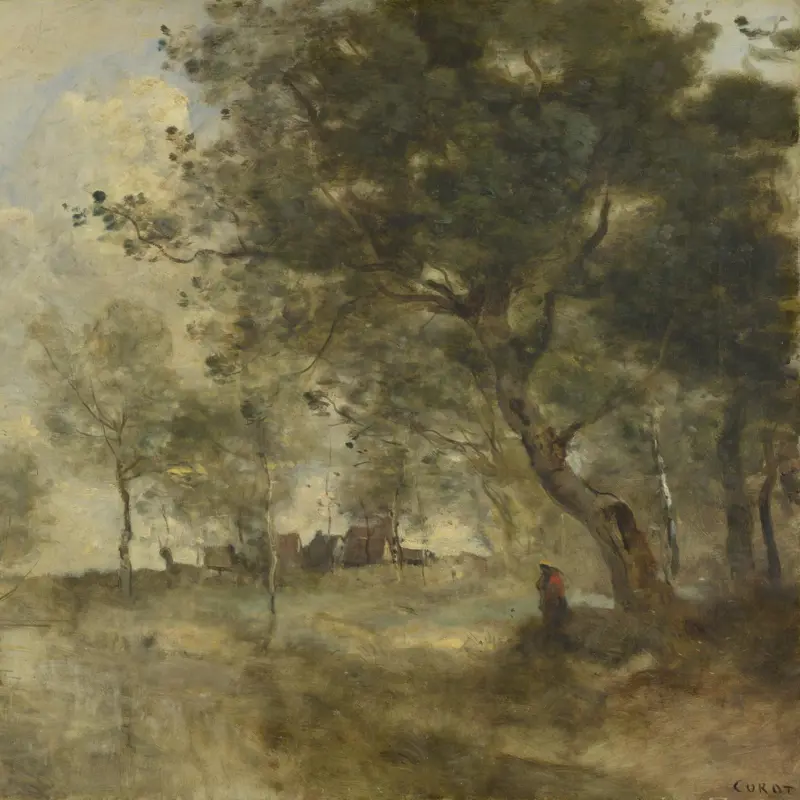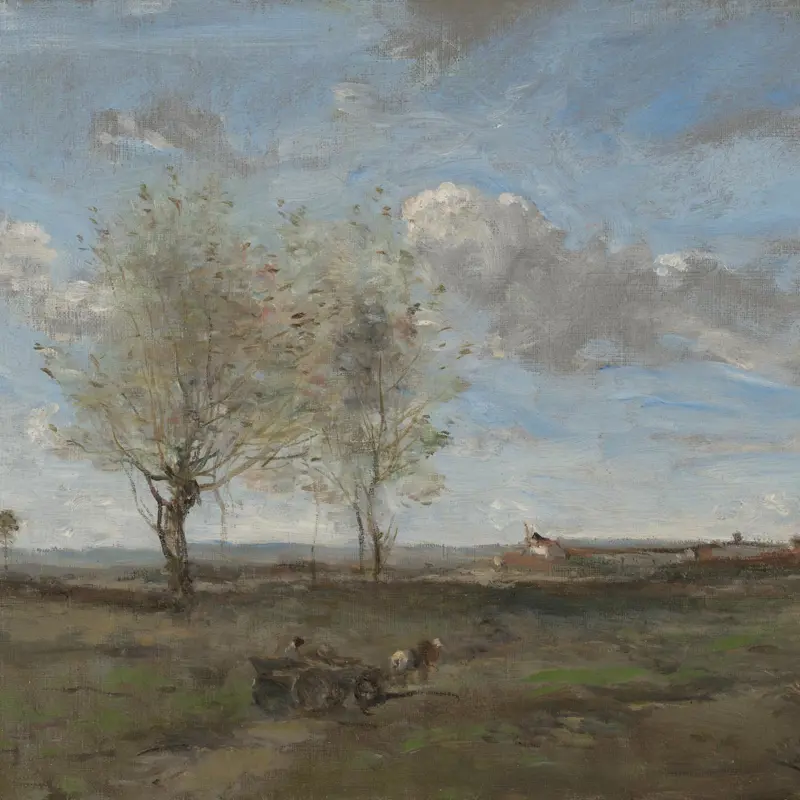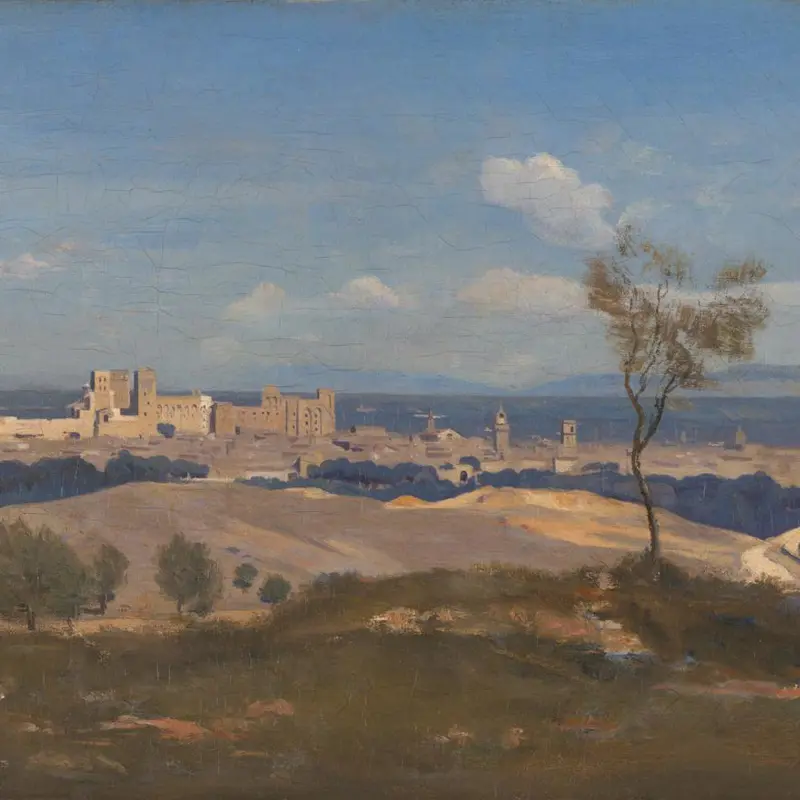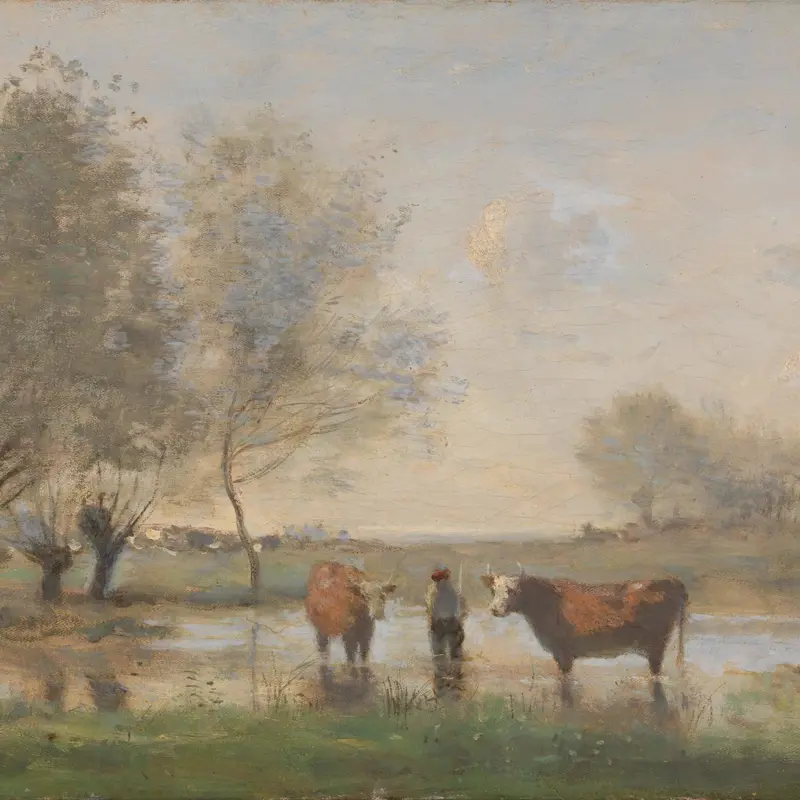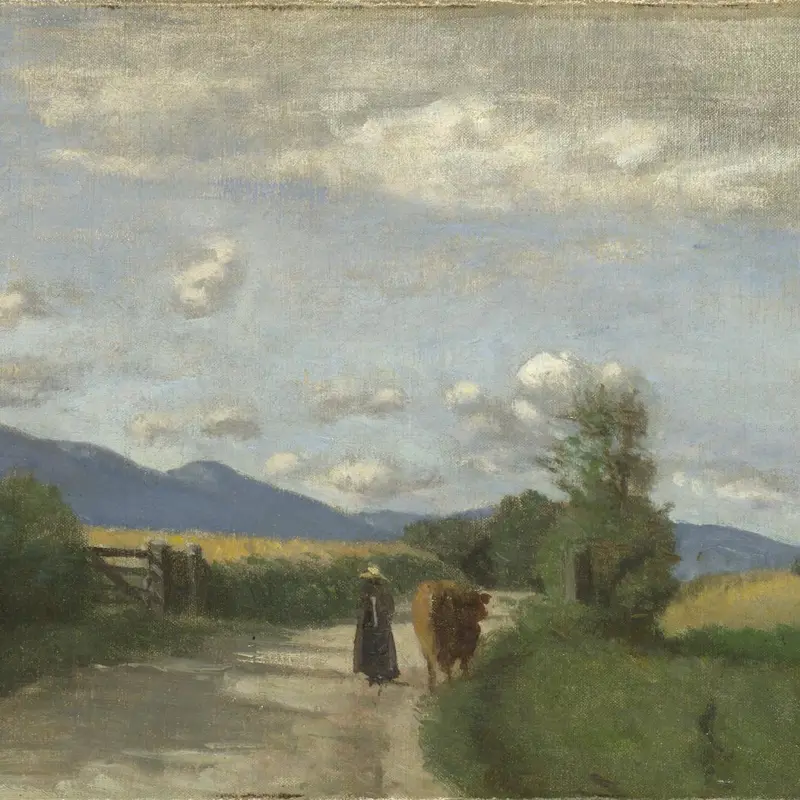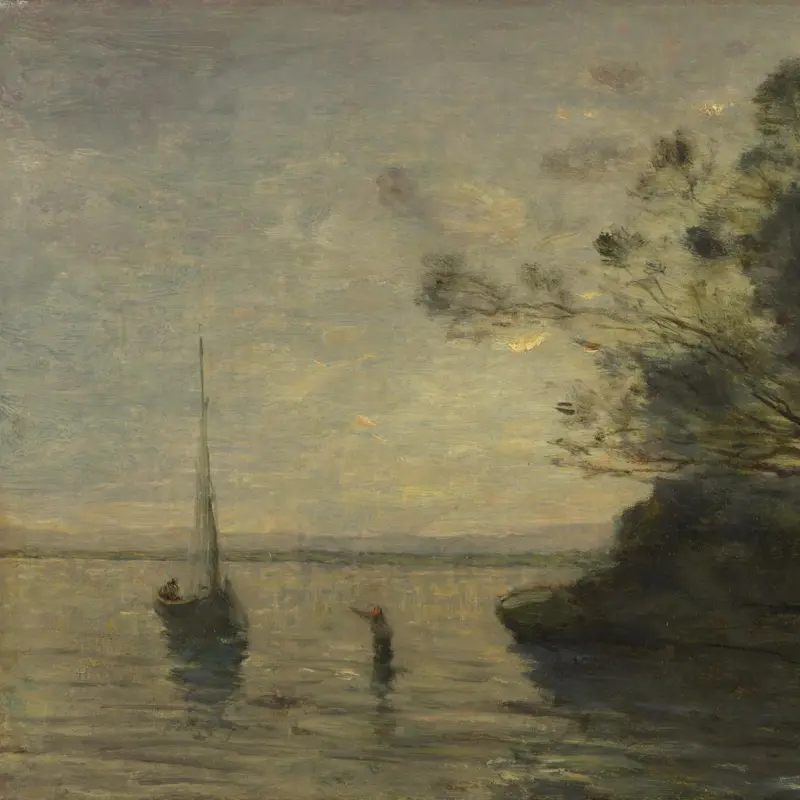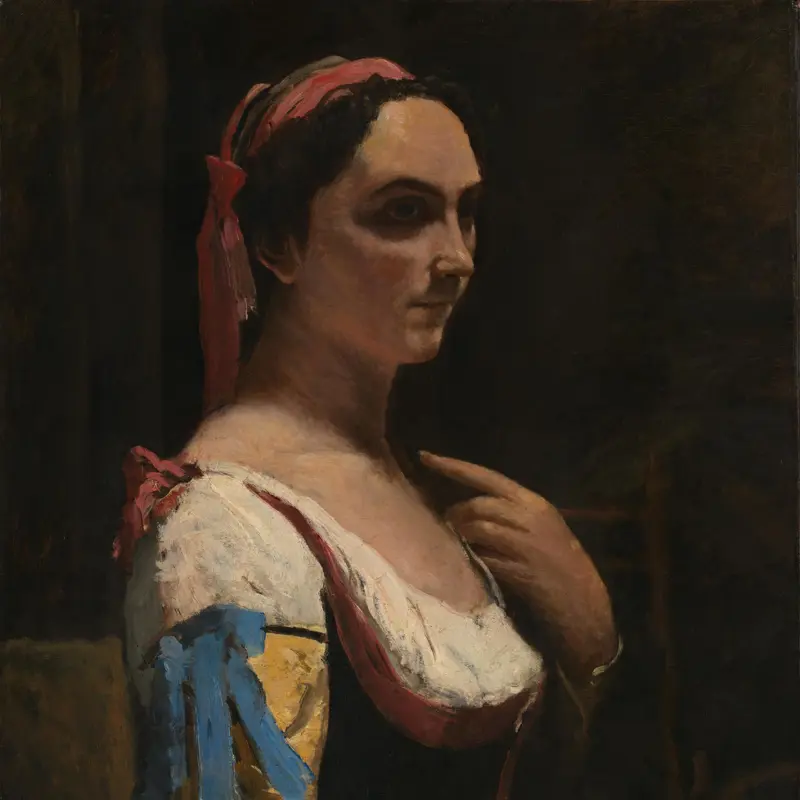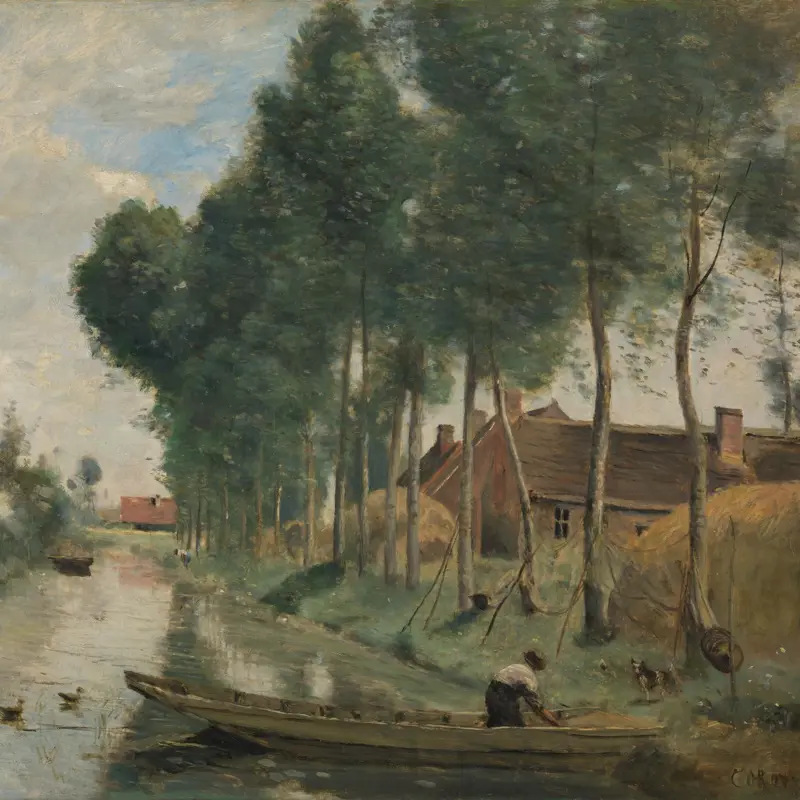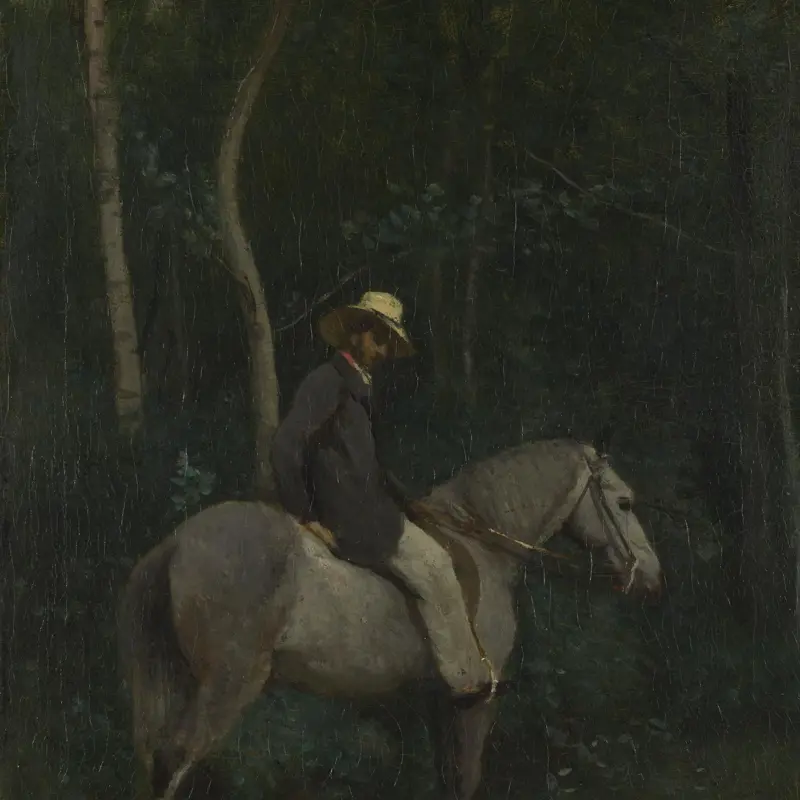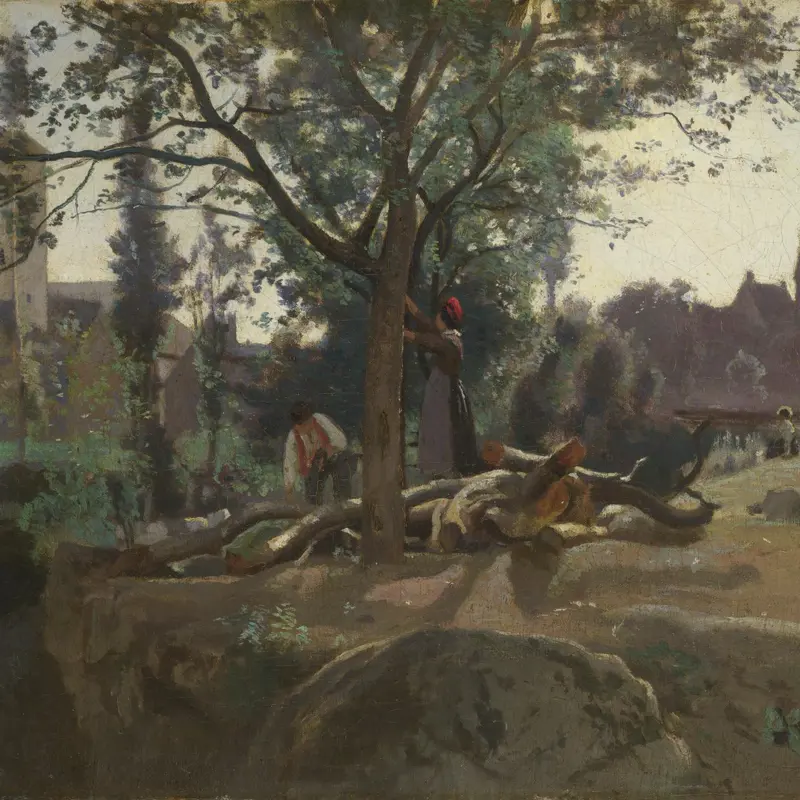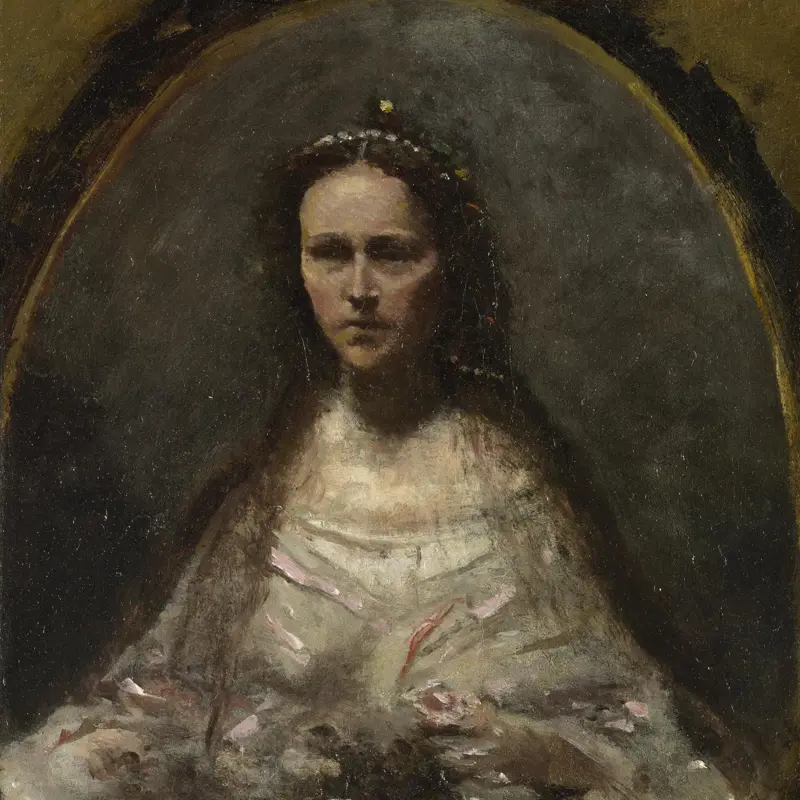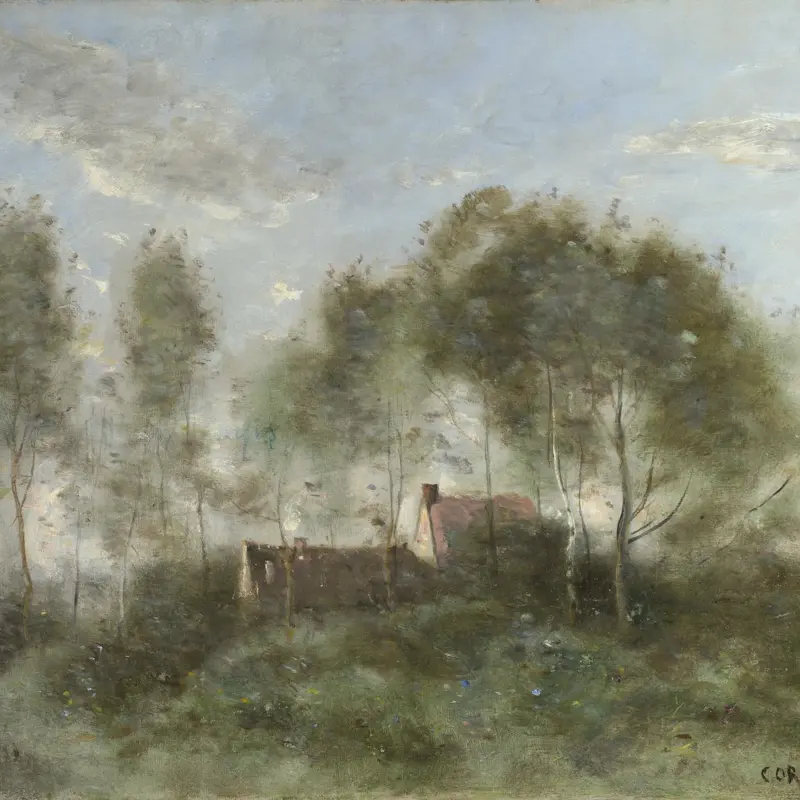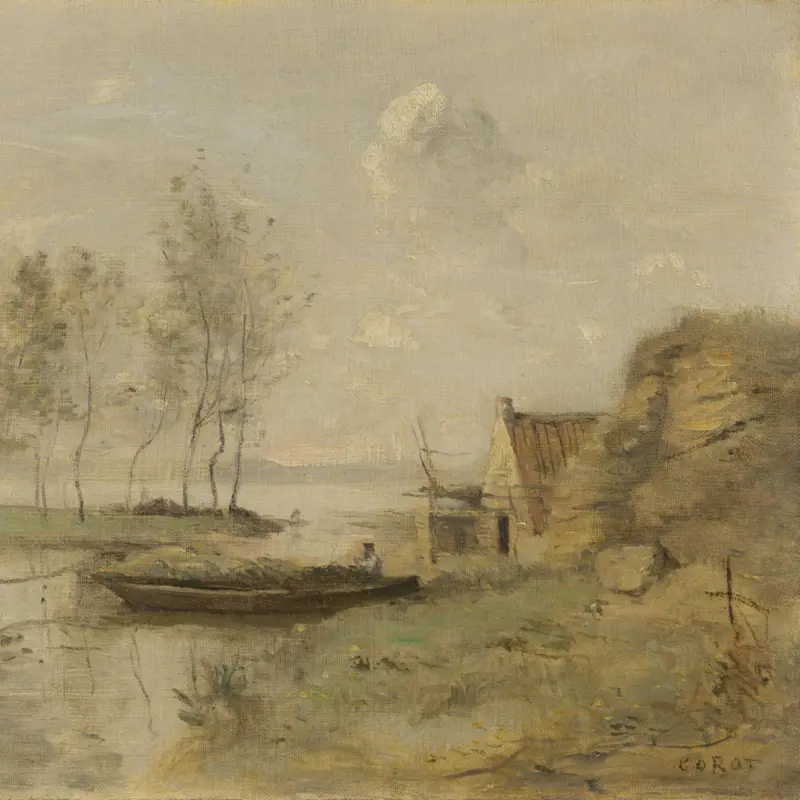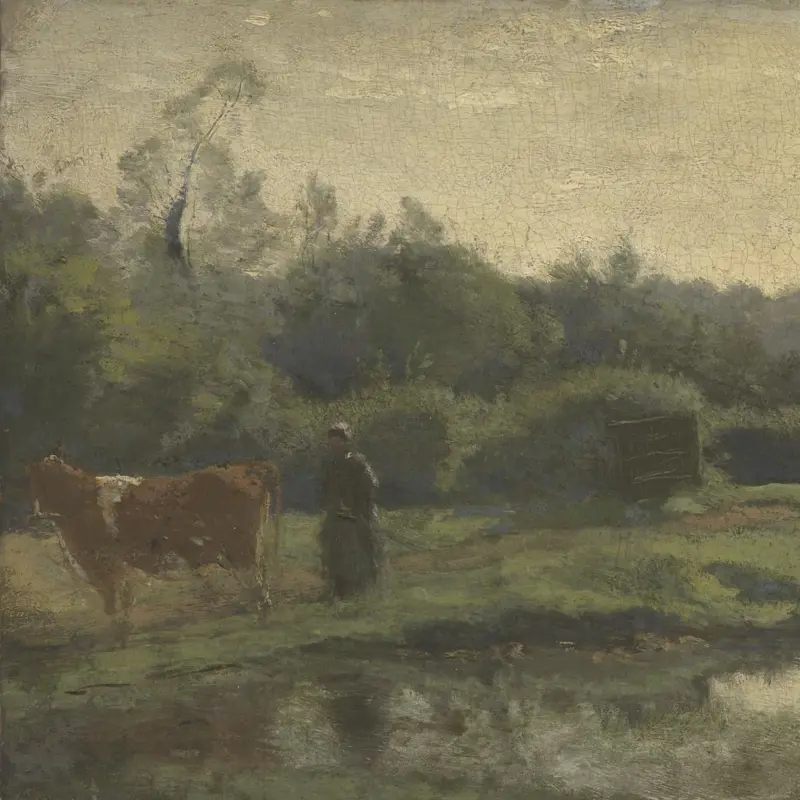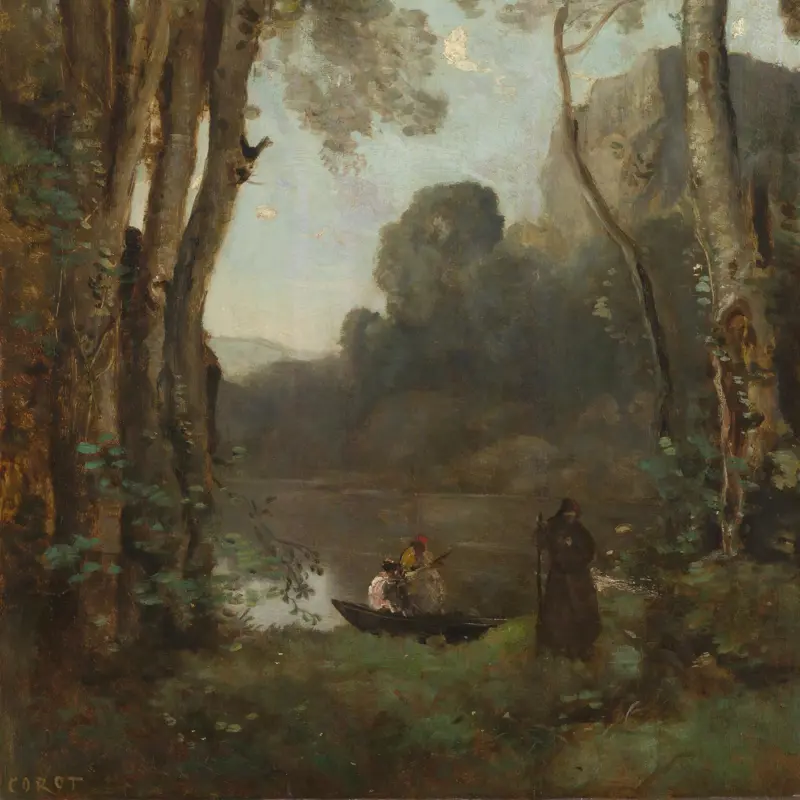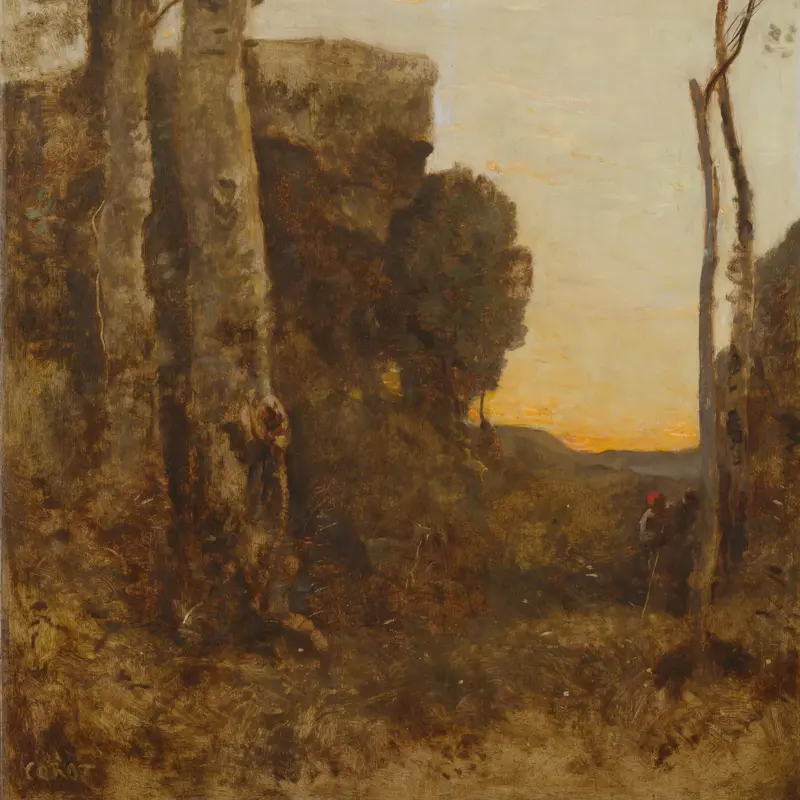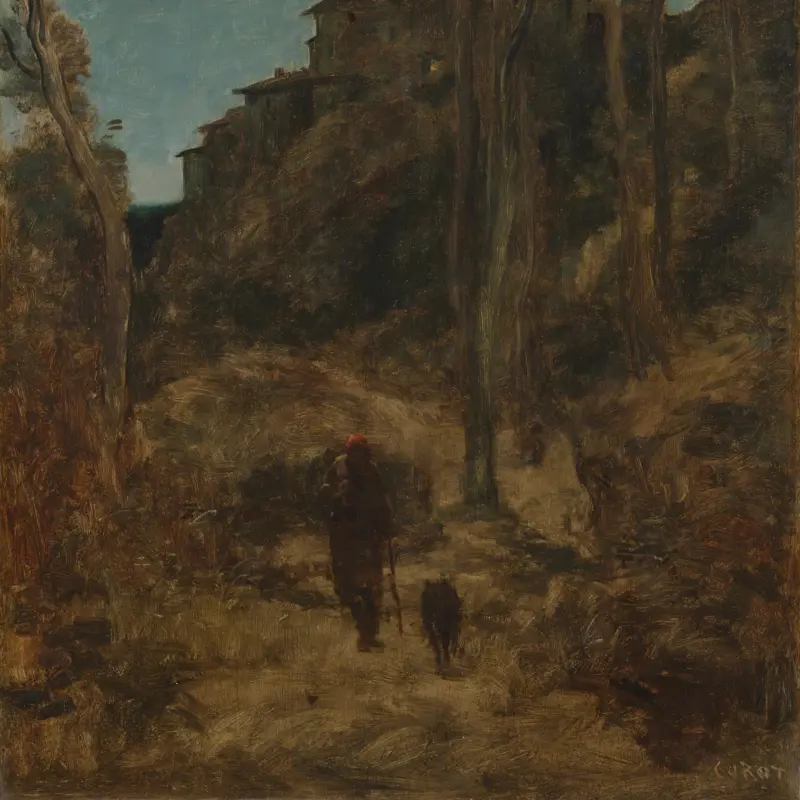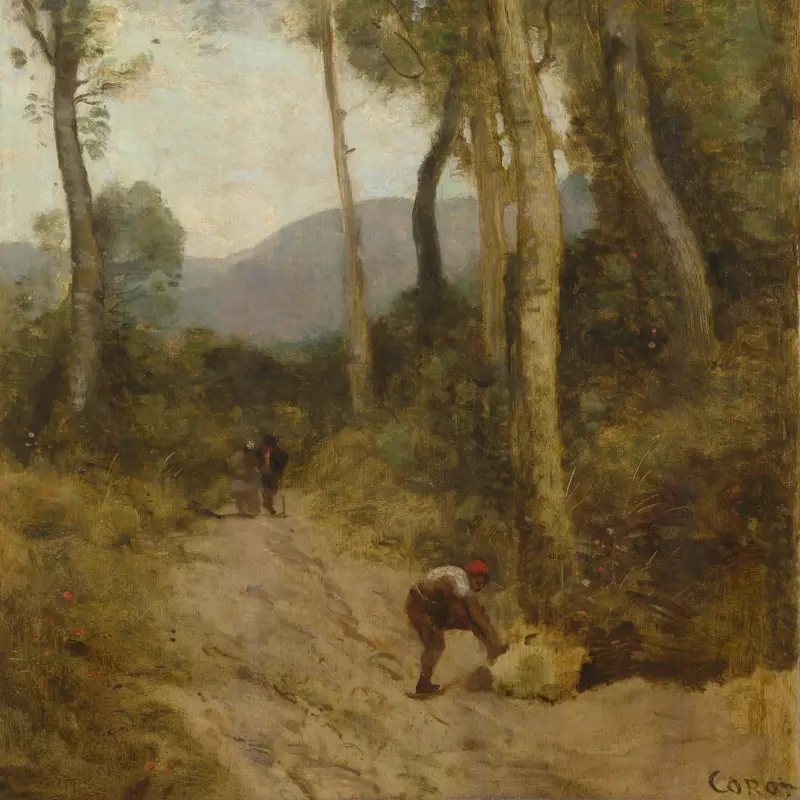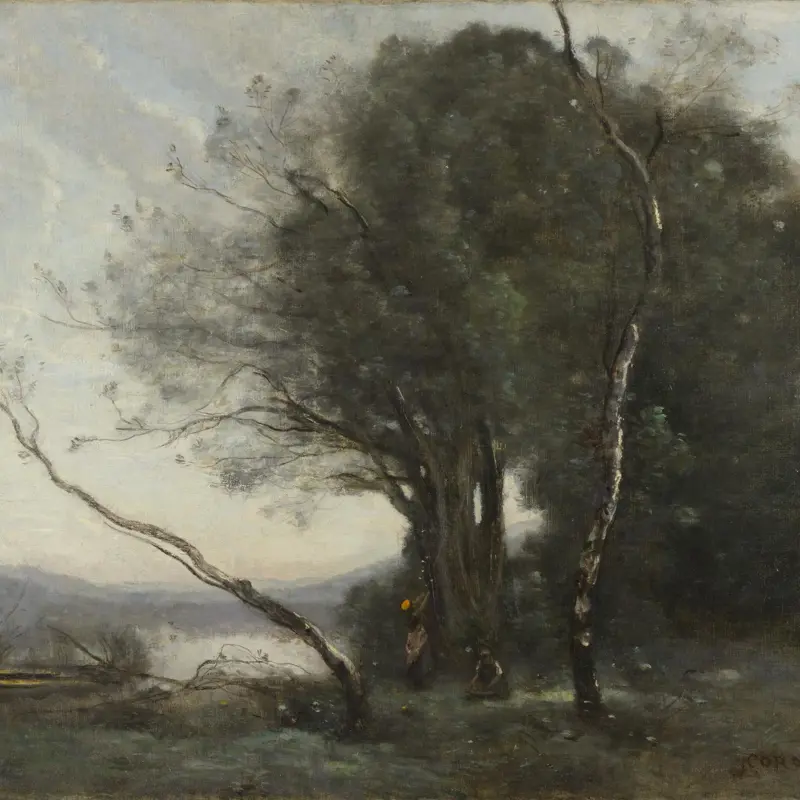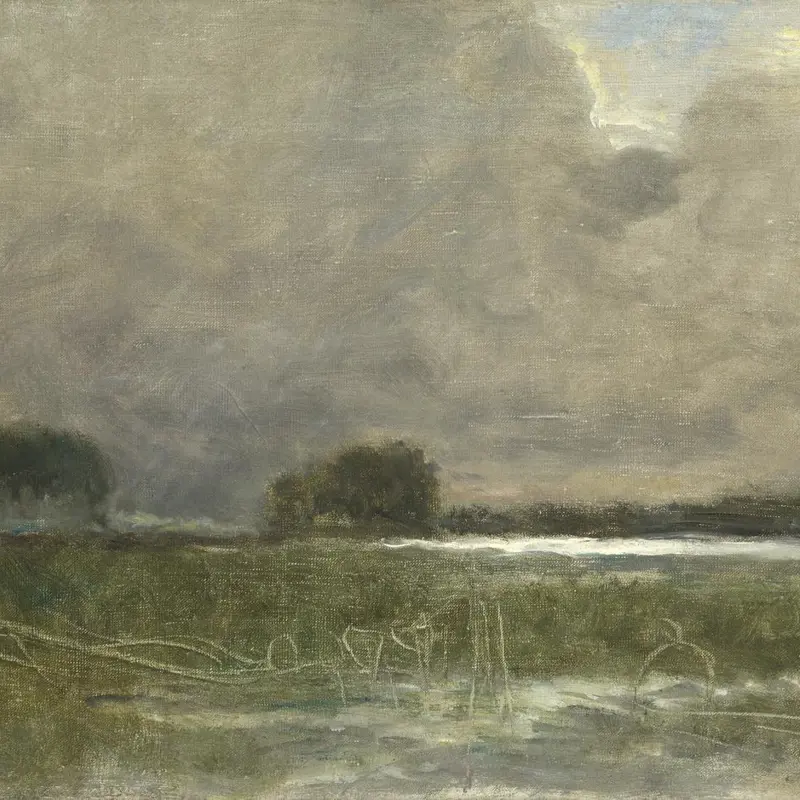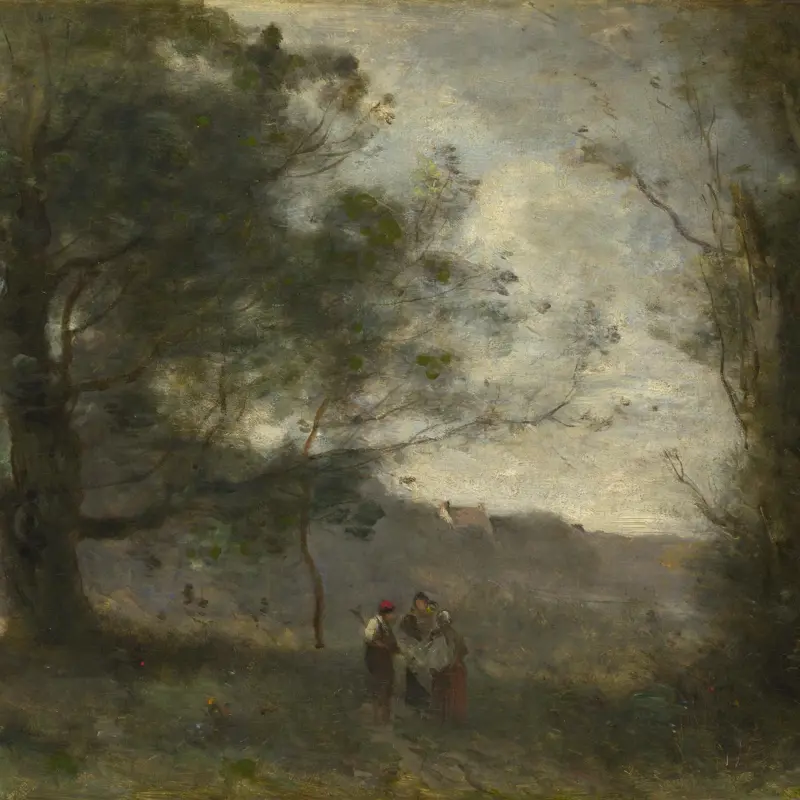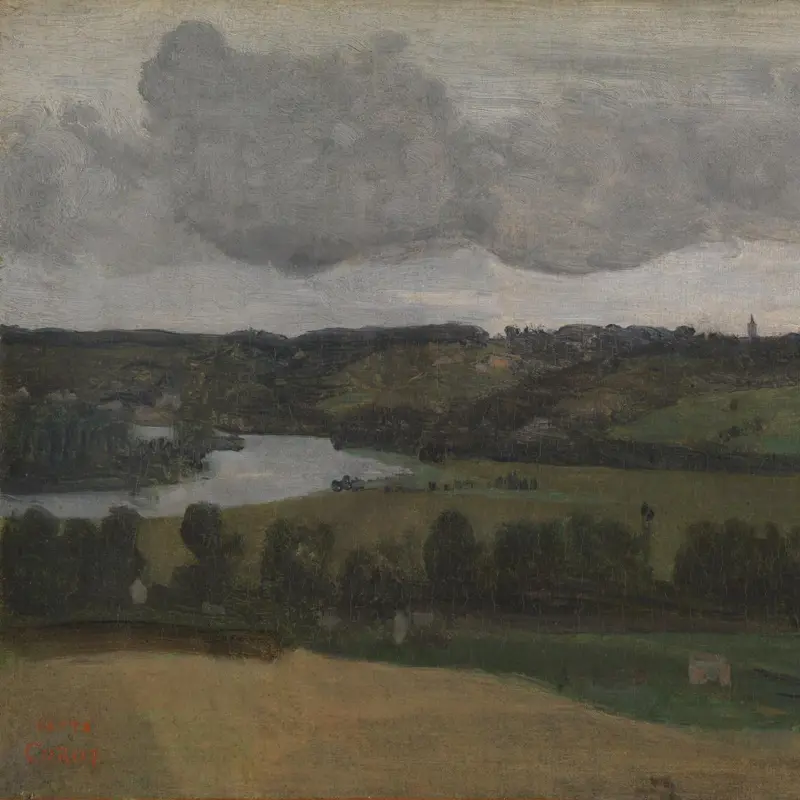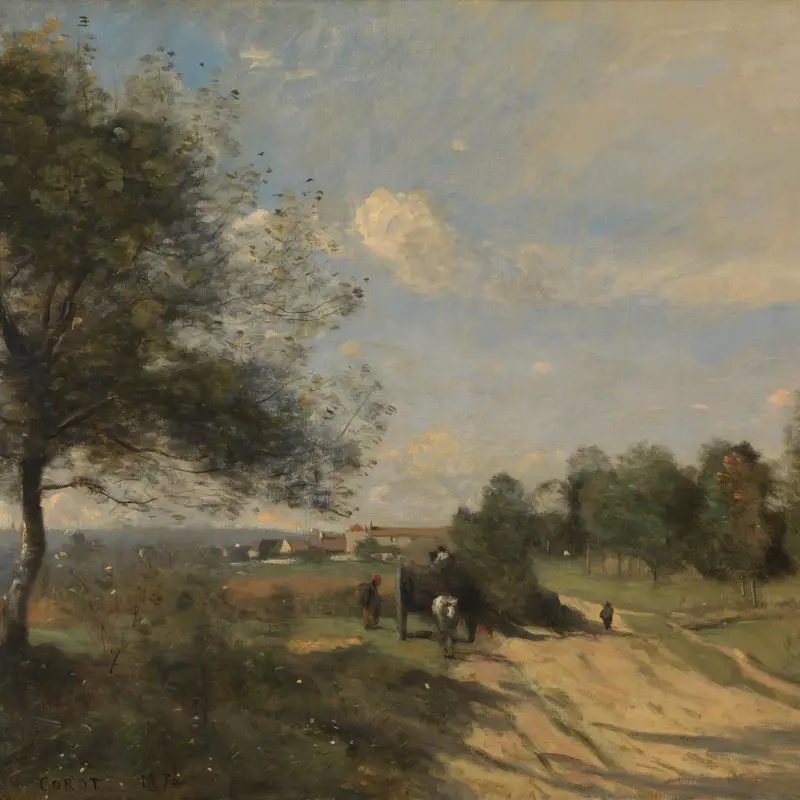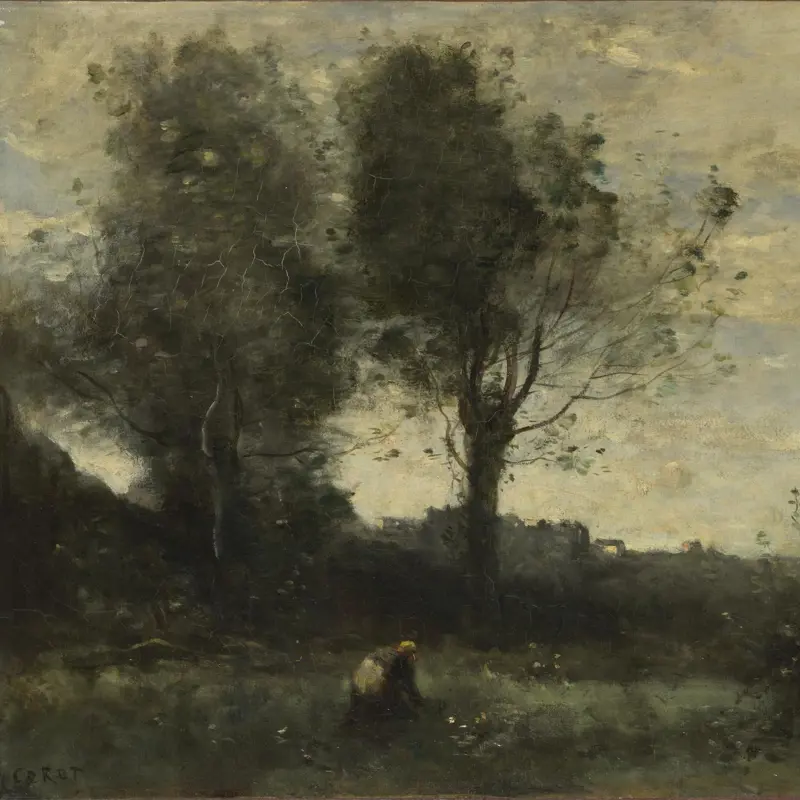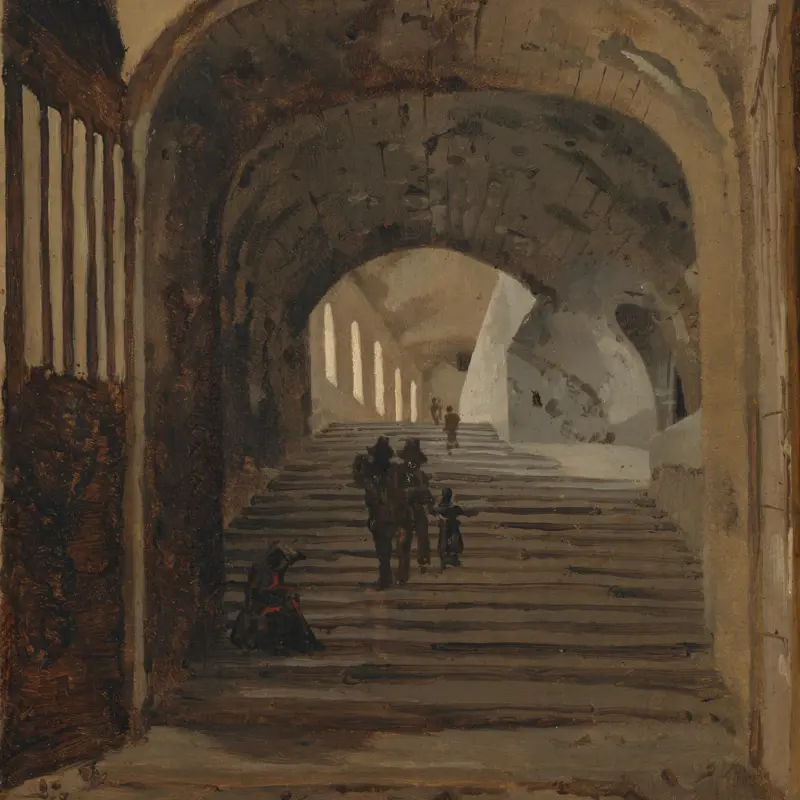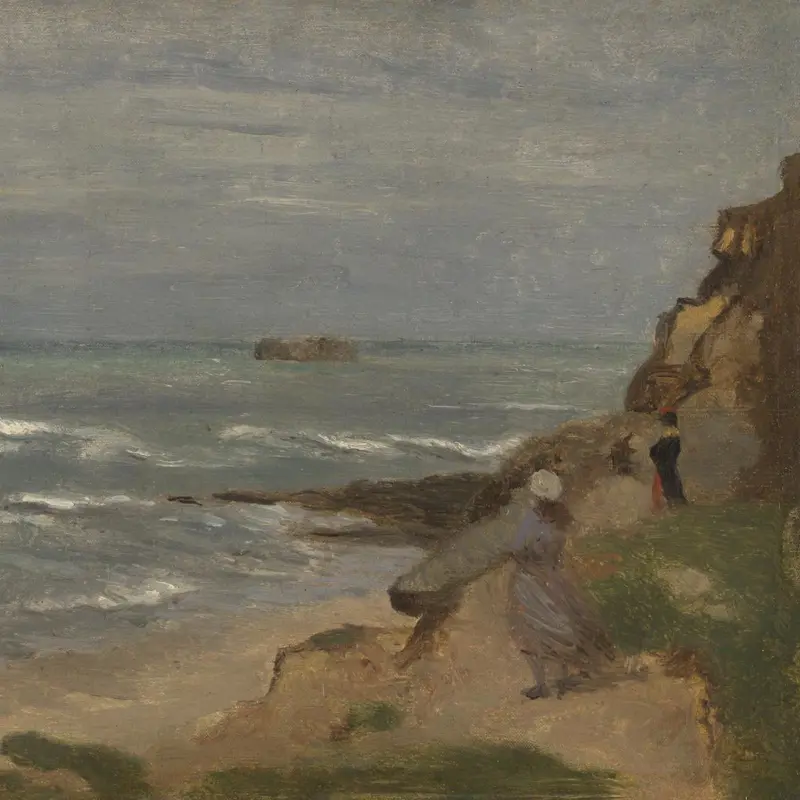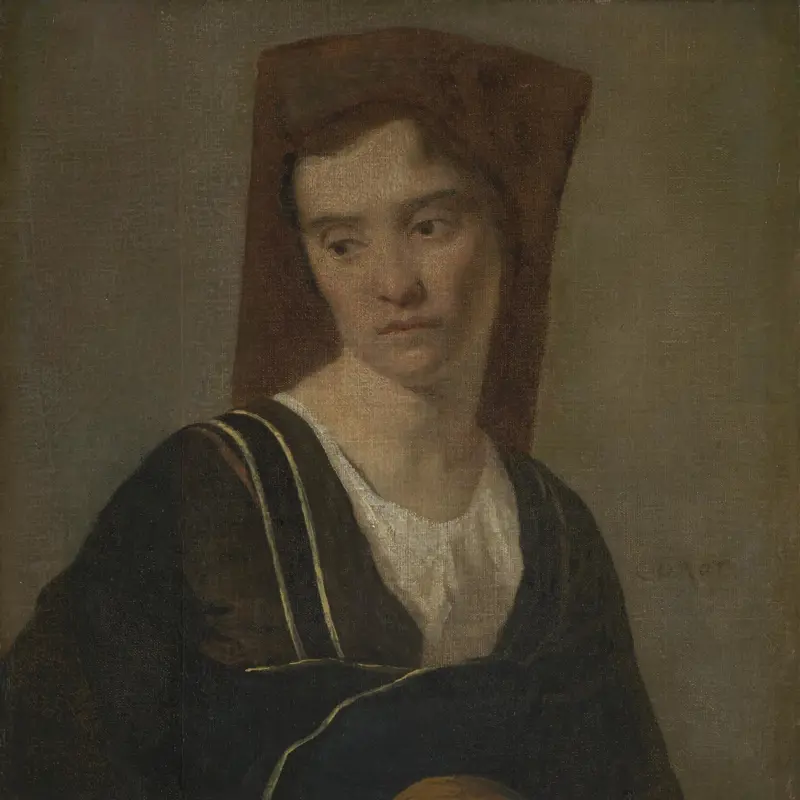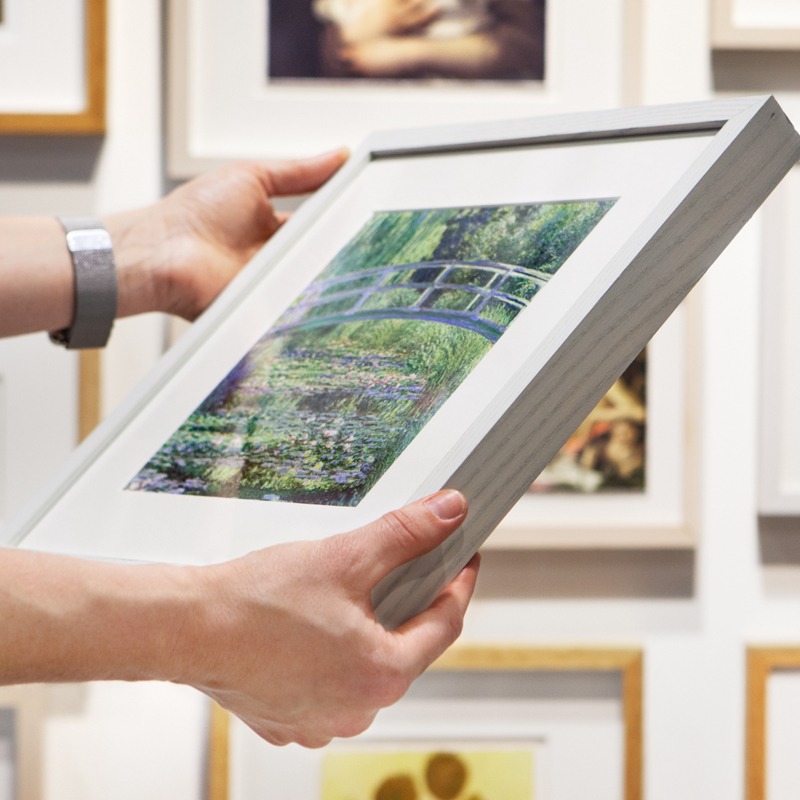Jean-Baptiste-Camille Corot, 'The Roman Campagna, with the Claudian Aqueduct', probably 1826
About the work
Overview
It is likely that Corot painted this small oil sketch on paper in the spring of 1826, a few months after beginning his first of three trips to Italy. He painted a number of views that included the Aqua Claudia, a Roman aqueduct, which you can see in the distance, around five kilometres south-east of Rome. The square tower almost in the centre of the picture is the Tor Fiscale, a medieval defence tower. The Alban Hills can be seen on the right, and the Monti Prenestini on the left. The River Almone flows in the mid-distance, behind the trees.
Corot used a limited range of colours to create an open sunlit landscape beneath a blue sky filled with bright cumulus clouds. Despite the picture’s very small size, he has created an effect of expansive space with very economical means, as areas of colour, laid down with thin paint, are given definition and scale by details such as the trees and architecture.
Key facts
Details
- Full title
- The Roman Campagna, with the Claudian Aqueduct
- Artist
- Jean-Baptiste-Camille Corot
- Artist dates
- 1796 - 1875
- Date made
- probably 1826
- Medium and support
- oil on paper, mounted on canvas
- Dimensions
- 22.8 × 34 cm
- Inscription summary
- Signed
- Acquisition credit
- Bought at the Degas sale (with a special grant), 1918
- Inventory number
- NG3285
- Location
- Room 39
- Collection
- Main Collection
- Frame
- 20th-century Replica Frame
Provenance
Additional information
Text extracted from the ‘Provenance’ section of the catalogue entry in Sarah Herring, ‘National Gallery Catalogues: The Nineteenth Century French Paintings’, vol. 1, ‘The Barbizon School’, London 2019; for further information, see the full catalogue entry.
Exhibition history
-
2009Corot to Monet: A Fresh Look at Landscape from the CollectionThe National Gallery (London)8 July 2009 - 20 September 2009
-
2010Close Examination: Fakes, Mistakes and DiscoveriesThe National Gallery (London)30 June 2010 - 12 September 2010
-
2012Camille Corot: Nature and DreamStaatliche Kunsthalle Karlsruhe29 September 2012 - 6 January 2013
-
2013Through European Eyes: The Landscape Oil SketchThe National Gallery (London)6 February 2013 - 28 April 2013
-
2014Artistic Exchanges: Corot, Costa, LeightonThe National Gallery (London)7 May 2014 - 3 September 2014
-
2016Painters' Paintings: From Freud to Van DyckThe National Gallery (London)23 June 2016 - 4 September 2016
-
2018RomanticismGallerie d'Italia - Piazza Scala25 October 2018 - 17 March 2019
Bibliography
-
1905A. Robaut, L'oeuvre de Corot: Catalogue raisonné et illustré, Paris 1905
-
1918Mouvement des arts: La collection Edgar Degas', La Chronique des arts, 1918, pp. 85-7
-
1918Galerie Georges Petit, Catalogue des tableaux modernes et anciens, aquarelles, pastels, dessins, par Bartholomé … composant la collection de Edgar Degas, Paris, 26 March 1918 - 27 March 1918
-
1936C.J. Holmes, Self and Partners (mostly Self), London 1936
-
1946Martin Davies, National Gallery Catalogues: French School, London 1946
-
1957Martin Davies, National Gallery Catalogues: French School, 2nd edn (revised), London 1957
-
1970Davies, Martin, and Cecil Gould, National Gallery Catalogues: French School: Early 19th Century, Impressionists, Post-Impressionists etc., London 1970
-
1987
J. Jullien and R. Jullien, 'Corot Dans Les Castelli Romani', Gazette des Beaux-Arts, CXX1X, Paris October 1987
-
1989D. Sutton, 'The Degas Sales and England', The Burlington Magazine, CXXXI/1033, 1989, pp. 266-72
-
1989A. Roquebert, 'Degas collectionneur', in Degas Inédit, Actes du Colloque Degas, Musée d'Orsay (1988), Paris 1989, pp. 65-85
-
1990P.-K. Schuster, Carl Blechen: Zwischen Romantik und Realismus (exh. cat. Nationalgalerie, 31 August - 4 November 1990), Berlin 1990
-
1991P. Galassi, Corot in Italy: Open-Air Painting and the Classical-landscape Tradition, New Haven 1991
-
1991M. Clarke, 'Degas and Corot: The Affinity Between Two Artists' Artists', Apollo, 1991, pp. 15-20
-
1994S. Adams, The Barbizon School and the Origins of Impressionism, London 1994
-
1996A. Dumas, Degas as a Collector, London 1996
-
1996D. Saunders, H. Chahine and J. Cupitt, 'Long-Term Colour Change Measurement: Some Results after Twenty Years', National Gallery Technical Bulletin, XVII, 1996, pp. 81-90
-
1996P. Conisbee et al., In the Light of Italy: Corot and early Open-Air Painting (exh. cat. National Gallery of Art, Washington, 26 May - 2 September 1996; Brooklyn Museum, 11 October 1996 - 12 January 1997; Saint Louise Art Musuem, 21 February - 18 May 1997), New Haven 1996
-
1997A. Dumas et al., The Private Collection of Edgar Degas (exh. cat. Metropolitan Museum of Art, 1 October 1997 - 11 January 1998), New York 1997
-
2001
C. Baker and T. Henry, The National Gallery: Complete Illustrated Catalogue, London 2001
-
2001S. Herring, 'The National Gallery and the Collecting of Barbizon Paintings in the Early Twentieth Century', Journal of the History of Collections, XIII/1, 2001, pp. 77-89
-
2004B. Hedinger, I. Richter-Musso and O. Westheider, Wolkenbilder: Die Entdeckung des Himmels (exh. cat., Norddeutsches Landesmuseum, Hamburg; Nationalgalerie, Berlin; Aargauer Kuntshaus, Aarau), Hamburg 2004
-
2004B. Hedinger, I. Richter-Musso and O. Westheider, Wolkenbilder: Die Entdeckung des Himmels (exh. cat. Bucerius Kunst Forum, 6 June - 5 September 2004), Munich 2004
-
2006A. Dumas et al., Edgar Degas: The Last Landscapes (exh. cat. Ny Carlsberg Glyptotek, 28 June - 27 August 2006; Columbus Museum of Art, 13 October 2006 - 21 January 2007), London 2006
-
2007
N. Spinosa (ed.), Omaggio a Capodimonte (exh. cat., Museo di Capodimonte, Naples), Naples 2007
-
2019Herring, Sarah, National Gallery Catalogues: The Nineteenth Century French Paintings, 1, The Barbizon School, London 2019
About this record
If you know more about this work or have spotted an error, please contact us. Please note that exhibition histories are listed from 2009 onwards. Bibliographies may not be complete; more comprehensive information is available in the National Gallery Library.

